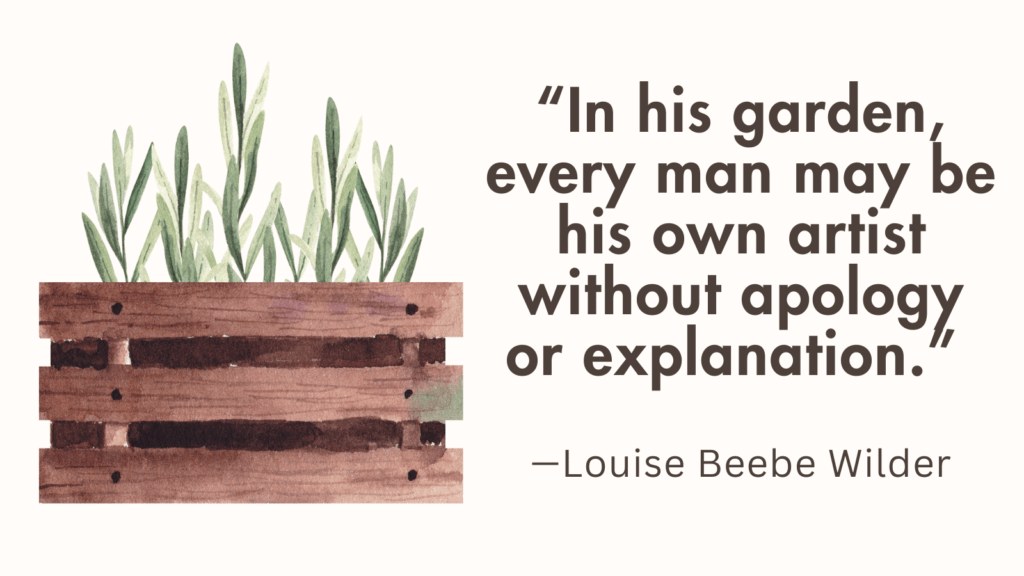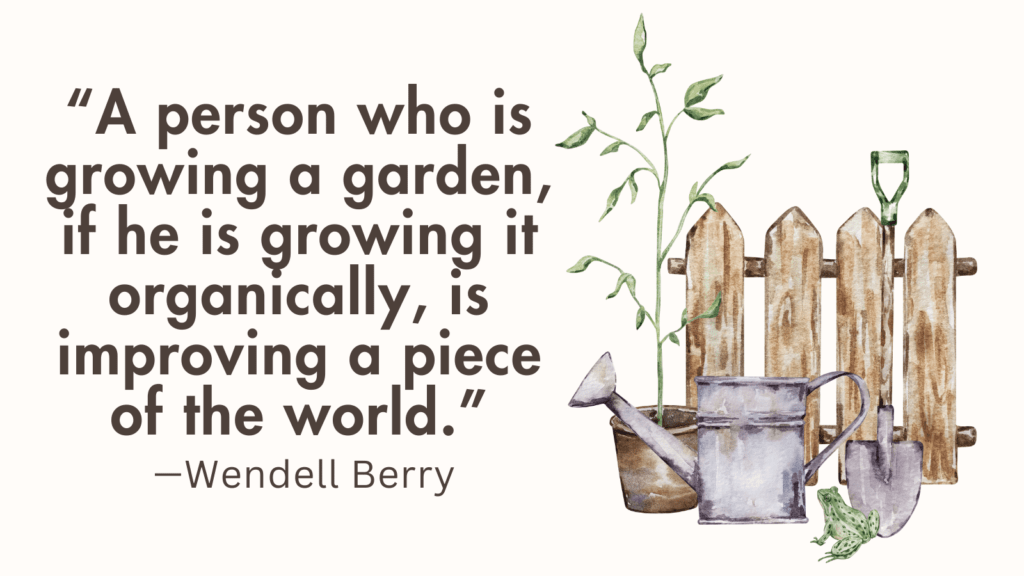In this post, you’re going to find out when is the worst time to water plants.
When Is the Worst Time to Water Plants?
Watering is a crucial aspect of plant care that directly affects their growth, health, and overall productivity.
While the timing of watering may vary depending on the specific needs of different plant species, there are a few general guidelines to consider.
Let’s explore when the worst time to water plants might be.
1. Midday/Early Afternoon
Watering plants during the hottest part of the day, typically between 10 am and 4 pm, is generally considered the worst time.
This is because high temperatures and intense sunlight can lead to rapid evaporation, causing the water to quickly evaporate instead of being absorbed by the roots.
As a result, the plants may not receive adequate hydration, leading to wilting and potential damage.
Additionally, watering during this time can increase the risk of leaf burn or scorching.
When water droplets on the leaves are exposed to direct sunlight, they can act as a magnifying glass, intensifying the sun’s rays and causing damage to the plant tissues.
2. Late Evening/Night
Watering late in the day can create a humid environment around the plant, especially if the foliage remains wet overnight.
This prolonged moisture can promote the growth of fungi and other pathogens, increasing the risk of diseases such as powdery mildew or root rot.
Furthermore, watering at night may attract pests like snails and slugs, as they prefer damp conditions.
These pests can cause substantial damage to the plants, thus making it the worst time to water them.
Related: Garden Tool Box [Complete Guide + Resources]
3. Rainy Days
While it may seem counterintuitive, watering plants during or just before rainfall can be detrimental.
During rainy periods, plants naturally receive water from precipitation.
Adding additional water through irrigation or watering can lead to waterlogged soil, which results in poor aeration and limits oxygen availability to the roots.
Over time, this can lead to root rot and other related issues.
4. Cold Temperatures
Watering plants when temperatures are close to freezing or below is generally inadvisable.
Cold water can shock the roots and potentially damage the plant tissues. It’s best to wait until the temperature rises before watering in colder climates.
Related: How To Build A Garden Window?
When Is the Best Time to Water Plants?
Now that we have identified some of the worst times to water plants, let’s discuss the best time for watering:
1. Early Morning
Generally, the best time to water plants is in the early morning, preferably between 6 am and 8 am.
During this time, temperatures are usually cooler, reducing evaporation rates.
The water has time to soak into the soil and will be available to the plants throughout the day.
The foliage also has an opportunity to dry out, reducing the risk of fungal diseases.
2. Late Afternoon
If it is not possible to water in the early morning, watering in the late afternoon can be an alternative.
Around 4 pm to 6 pm, temperatures are typically lower compared to midday, reducing evaporation rates while still allowing enough time for the plants to dry before nightfall.
Related: Why Do You Plant Rosemary By Your Garden Gate?
Factors Influencing Plant Watering Needs
Understanding the factors that influence plant watering needs is essential for maintaining healthy and thriving plants.
By considering these factors, gardeners and plant enthusiasts can make informed decisions about when and how much to water their plants.
Let’s explore some of the key factors influencing plant watering needs.
1. Plant Species and Varieties
Different plant species and varieties have varying water requirements. Some plants, such as succulents and cacti, are adapted to arid environments and can store water in their leaves or stems.
These plants typically require less frequent watering.
On the other hand, tropical plants or those with large, lush foliage may have higher water requirements and need more regular watering.
2. Growth Stage
The growth stage of a plant also affects its water needs.
Newly planted seeds or seedlings typically require more frequent watering to establish their root systems.
As plants grow and mature, their water requirements may change.
For example, flowering and fruiting plants often require increased watering during these stages to support the development of flowers and fruits.
Related: How To Start Farming With No Money?
3. Environmental Conditions
Environmental factors play a significant role in determining plant watering needs. Here are some key environmental factors to consider:
– Temperature: High temperatures increase evaporation rates and can lead to faster soil drying. Plants in hot climates or exposed to direct sunlight may require more frequent watering. Conversely, cooler temperatures or shaded areas may result in lower water requirements.
– Humidity: Humidity levels also impact plant watering needs. In humid environments, moisture from the air can reduce the rate of evaporation, potentially reducing the frequency of watering. In dry and arid regions, however, low humidity can increase the rate of water loss, necessitating more regular watering.
– Wind: Wind can increase transpiration rates by causing water loss through the leaves. Plants exposed to windy conditions may require more frequent watering to compensate for the increased water loss.
4. Soil Type and Composition
The type and composition of the soil directly affect its water-holding capacity and drainage characteristics. Here are a few examples:
– Sandy Soil: Sandy soil has larger particles and tends to drain water quickly. As a result, plants grown in sandy soil may require more frequent watering due to the rapid drying of the soil.
– Clay Soil: Clay soil consists of small particles that retain moisture for longer periods. While this may sound beneficial, excessive water retention can lead to poor drainage and waterlogging, which can be detrimental to plant health. Watering frequency in clay soil should be adjusted to prevent overwatering.
– Loamy Soil: Loamy soil, which is a balanced mixture of sand, silt, and clay, provides good water drainage while retaining adequate moisture. This type of soil generally supports healthy plant growth and requires watering less frequently than sandy soil.
Related: What’s The Difference Between A Farm And A Ranch?
5. Container Size and Material
For potted plants, container size and material play a role in watering needs.
Smaller containers have limited soil volume and can dry out more quickly, requiring more frequent watering.
Additionally, certain materials, such as clay or terracotta pots, allow water to evaporate through the sides, potentially leading to faster drying of the soil.
In contrast, plastic or glazed ceramic pots tend to retain moisture better, resulting in reduced watering frequency.
6. Cultural Practices
Cultural practices, including mulching, can influence plant watering needs.
Mulch acts as a protective layer on the soil surface, reducing evaporation, conserving moisture, and minimizing weed growth.
By using organic mulch, such as wood chips or straw, gardeners can help retain soil moisture and potentially decrease watering frequency.
Related: How To Keep Chickens Out Of Garden?
7. Rainfall
The amount and frequency of rainfall in a particular region can significantly impact plant watering needs.
If a significant amount of rain occurs, it may reduce the need for supplemental watering.
However, it’s important to note that rainfall alone may not provide sufficient water if the soil composition or environmental conditions result in inadequate water retention.
8. Plant Health and Stress
Healthy plants generally have better water uptake and utilization, whereas stressed plants may exhibit signs of water deficiency.
Stressed plants, such as those affected by pests, diseases, or nutrient deficiencies, may show wilting or leaf curling even when soil moisture is adequate.
In such cases, plant watering needs may need to be adjusted to support the plant during periods of stress.
Related: Does Clover Grow In Shade?
General Guidelines for Watering Plants
1. Check the Soil Moisture
Before watering your plants, it is crucial to check the moisture level of the soil.
Stick your finger about 2-3 inches into the soil, and if it feels dry at that depth, it’s a good indication that your plants need watering.
However, if the soil feels moist, it’s best to hold off on watering until it dries out a bit.
2. Watering Frequency
The frequency of watering depends on several factors, including the plant species, environmental conditions, and soil type.
As a general rule, it’s better to water deeply and less frequently rather than shallowly and frequently.
Deep watering encourages plants to develop strong root systems as they search for water deeper in the soil.
Related: How to Protect Your Watermelon Farm?
3. Watering Method
The method of watering can also influence plant health. Here are a few common methods:
– Watering from Above: This method involves watering the plants from above using a watering can or hose. It is suitable for most plants, but it’s essential to avoid getting water on the foliage, as this can lead to the development of fungal diseases. Instead, direct the water towards the base of the plants.
– Drip Irrigation: Drip irrigation systems deliver water directly to the root zone of plants, minimizing evaporation and water waste. This method is particularly useful for larger gardens or when watering needs to be automated.
– Soaker Hoses: Soaker hoses are porous hoses that release water slowly and evenly along their length. They are laid at the base of plants and work well for watering vegetable gardens or flower beds.
– Self-Watering Containers: Self-watering containers have built-in reservoirs that supply water to the plants as needed. These containers can be convenient for busy gardeners or when growing plants indoors.
4. Watering Amount
The amount of water required will depend on the specific plant and its water needs.
However, as a general guideline, aim to provide enough water to thoroughly moisten the root zone.
One way to determine the right amount is to water until you see water coming out of the drainage holes at the bottom of the container or when the surrounding soil is visibly saturated.
5. Mulching
Applying a layer of organic mulch around your plants can help retain moisture in the soil for longer periods.
Mulch acts as a protective barrier, reducing evaporation, suppressing weed growth, and insulating the soil.
Apply a layer of mulch around 2-4 inches thick, taking care to keep it a few inches away from the stems of the plants.
Related: How to Grow Winter Peas?
Conclusion
Understanding the best and worst times to water plants is essential for their overall health and productivity.
Avoid watering during periods of intense heat, late evening, or at night to prevent moisture-related issues and disease.
Instead, prioritize early morning or late afternoon watering to ensure the plants receive adequate hydration without compromising their wellbeing.

Garden Cart
*As an Amazon Associate I earn from qualifying purchases, at zero cost to you, if you click through the link and finalize a purchase.





